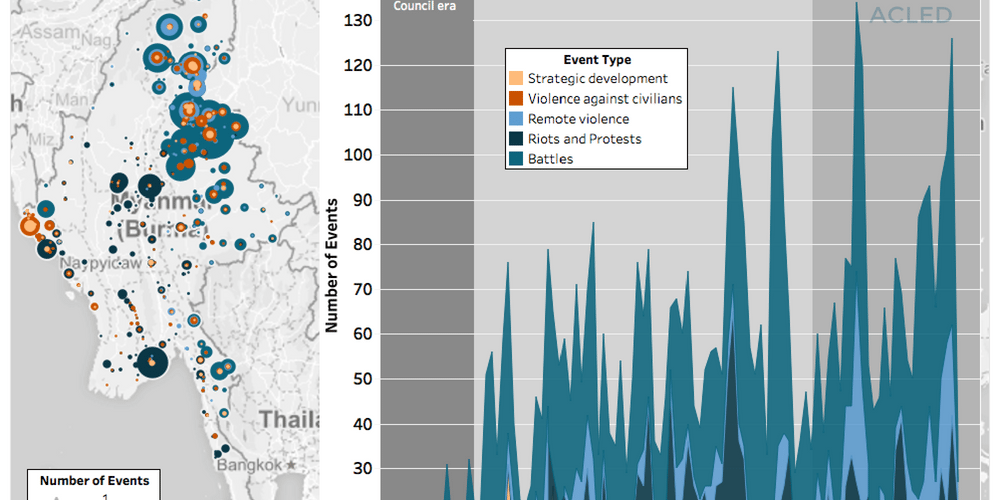Spanning from 2010 to the present, ACLED’s dataset for Myanmar includes over 5,000 recorded events. The data cover three political periods: the tail-end of the military dictatorship through 2010, the Union Solidarity and Development Party (USDP) administration from 2011 to 2016, and the start of the National League for Democracy (NLD)-led government from 2016 to present. The many conflicts between the Myanmar military and the various ethnic armed organizations (EAOs) in the country are represented in the data as are the numerous protests concerning labour, land and student rights as well as demands for peace.
The highest number of recorded events stems from the armed conflict in Kachin and Northern Shan state between the Myanmar military and the Kachin Independence Army (KIA) which restarted in 2011 and is ongoing. Fighting between the military and other EAOs has been particularly severe in Shan state. In 2016, several EAOs who have yet to sign the Nationwide Ceasefire Agreement (NCA) joined together to form the Northern Alliance and in doing so have gained leverage in the country’s ongoing peace process.
Several waves of political violence have also been recorded in Rakhine state. From June to October 2012, communal violence between Rakhine Buddhists and Rohingya Muslims resulted in a number of reported fatalities. Violence spiked in October 2016 and again in August 2017 in Rakhine state when the Arakan Rohingya Salvation Army (ARSA) attacked a number of police outposts. These latter events subsequently led to reports of state forces retaliating by killing, raping and burning down villages of Rohingya Muslims, causing hundreds of thousands to flee into neighboring Bangladesh. Outside of Rakhine state, rioting and communal violence between Buddhists and Muslims was reported in several places, most significantly in Meiktila in the Mandalay region in 2013.







